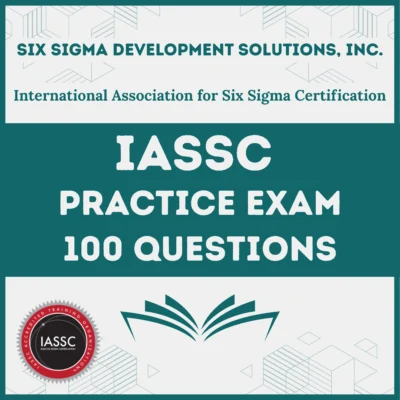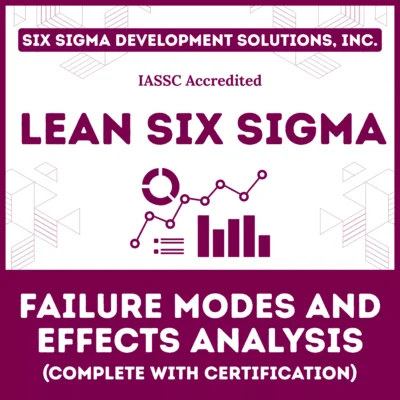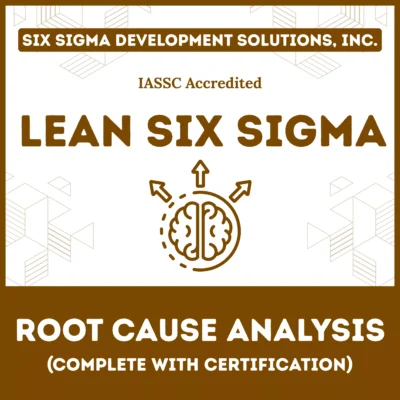Type I errors play a significant role in statistical hypothesis testing. It occurs when researchers mistakenly reject a null hypothesis that is actually true.
Understanding Type I errors is crucial in any field that relies on data analysis and hypothesis testing, such as medicine, psychology, and economics. This error can lead to incorrect conclusions and inappropriate decisions, so minimizing its occurrence is vital in research design.
Table of contents
What is a Type I Error?
A Type I error, also known as a false positive, happens when a statistical test rejects the null hypothesis when it is actually true. Essentially, the researcher concludes there is an effect or difference when, in fact, there is none.
For instance, in a medical trial, a Type I error might occur if a new treatment is mistakenly considered effective when it has no real benefit.
It is the error of accepting the alternative hypothesis (the hypothesis we wish to test) when the difference or effect we observe is simply due to random variation. The probability of a Type I error is represented by the significance level, often denoted as α.
A Type I error happens when you say something is true, but it’s actually false. Imagine you’re testing if a new medicine works. You find it does, but really, it doesn’t. This is a Type I error. It’s a “false positive.” You reject the idea of “no effect” when “no effect” is right.
Difference Between Type I and Type II errors
| Feature | Type I Error (False Positive) | Type II Error (False Negative) |
| Definition | Rejecting a true null hypothesis. Saying there is an effect when there isn’t. | Failing to reject a false null hypothesis. Saying there is no effect when there is. |
| Outcome | Finding a “false positive” result. | Missing a “true positive” result. |
| Probability | Represented by alpha (α), the significance level. | Represented by beta (β). |
| What it means | Incorrectly concluding that there is a significant effect. | Incorrectly concluding that there is no significant effect. |
| Real-world analogy | A medical test saying a healthy person has a disease. | A medical test saying a sick person is healthy. |
| Consequences | Risk in the legal system | This may lead to unnecessary actions or interventions. |
| Risk in legal system | Convicting an innocent person. | Acquitting a guilty person. |
| Relation to Null Hypothesis | Occurs when a true null hypothesis is rejected. | Occurs when a false null hypothesis is failed to be rejected. |
| How to decrease the chance | To decrease type 1 error risk, lowering the alpha value is used. | This may lead to missed opportunities for effective actions or interventions. |
Why Does It Happen?
Statistics uses random samples. Samples might not perfectly show the whole group. Even if there’s no real difference, samples can show a difference by chance. This chance difference can trick us.
How Type I Error Occurs?
Type I error occurs in the context of hypothesis testing. In a typical experiment, a null hypothesis (H0) is tested against an alternative hypothesis (H1). The null hypothesis assumes that there is no effect or difference. Researchers conduct tests to see if the data provides sufficient evidence to reject this null hypothesis in favor of the alternative hypothesis.
When researchers reject the null hypothesis without sufficient evidence, they commit a Type I error. This error happens when the data shows a significant result, but the result is purely due to chance rather than a true effect.
The Null Hypothesis
We start with a “null hypothesis.” It says there’s no difference. For example, “The new medicine is no better than the old one.” We test if this is likely. If we reject it, we say there’s a difference.
Types of Errors in Hypothesis Testing
In hypothesis testing, there are two main types of errors: Type I and Type II.
- Type I error (α error): Rejecting the null hypothesis when it is true.
- Type II error (β error): Failing to reject the null hypothesis when it is false.
While Type I error involves detecting an effect when there is none, Type II error refers to failing to detect an effect when one actually exists. Both types of errors are inevitable in hypothesis testing, but researchers aim to minimize them.
The Rejection Region
The rejection region is a critical concept in hypothesis testing. It represents the area in the distribution of the test statistic where the null hypothesis is rejected. This region is determined by the significance level, α, which is typically set to 0.05 or 0.01.
If the test statistic falls within this rejection region, the null hypothesis is rejected, leading to a decision that there is a significant effect or difference. However, if the null hypothesis is actually true, there is still a small probability (α) that the test statistic could fall in the rejection region due to random variation, leading to a Type I error.
How to Identify Type I errors?
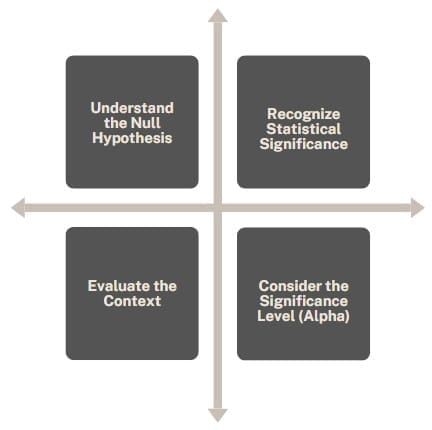
Identifying a Type I error involves understanding the context of hypothesis testing and recognizing when a statistically significant result might be a false positive. Here’s a breakdown of how to approach this:
- Understand the Null Hypothesis: Begin by clearly defining the null hypothesis. This is the statement of “no effect” or “no difference” that you’re testing. Example: “There is no difference in the effectiveness of Drug A and a placebo.”
- Recognize Statistical Significance: A Type I error occurs when a statistical test leads you to reject the null hypothesis when it’s actually true. This rejection is typically based on a p-value being less than the chosen significance level (alpha, α). So, when you see a result declared “statistically significant,” it means there’s a possibility of a Type I error.
- Consider the Significance Level (Alpha): The alpha level (e.g., 0.05) represents the probability of making a Type I error. If you set alpha at 0.05, you’re accepting a 5% risk of falsely rejecting the null hypothesis. Therefore, even with statistically significant results, there’s always that chance.
- Evaluate the Context:
- Multiple Comparisons: If you perform numerous statistical tests, the chance of a Type I error increases. Be wary of studies with many tests, especially if they only highlight a few “significant” results.
- P-hacking: This refers to practices that manipulate data or analyses to achieve a statistically significant p-value. This greatly increases the risk of type 1 errors.
- The nature of the study: Consider the likeliness of the alternative hypothesis being true. If a study claims to have found an extremely unlikely result, then it is more likely that a type 1 error has occurred.
Real-World Examples
- Medical Tests: A test says you have a disease, but you don’t. This is a Type I error. It can cause stress and unnecessary treatment.
- Court Cases: A jury finds someone guilty, but they’re innocent. This is a Type I error. It has serious consequences.
- Factory Quality Control: A machine is said to be faulty, but it’s working fine. This is a Type I error. It can lead to wasted time and money.
- Scientific Research: A study finds a new drug works, but it doesn’t. This is a Type I error. It can mislead future research.
- Security Systems: An alarm goes off, but there’s no intruder. This is a Type I error. It can cause panic and wasted resources.
Why We Care About Type I Errors?
- False Claims: Type I errors spread false information.
- Wasted Resources: They can lead to wasted time, money, and effort.
- Harm: In medicine or safety, they can cause harm.
- Erosion of trust: Too many false positives erode trust in research.
Controlling Type I Errors
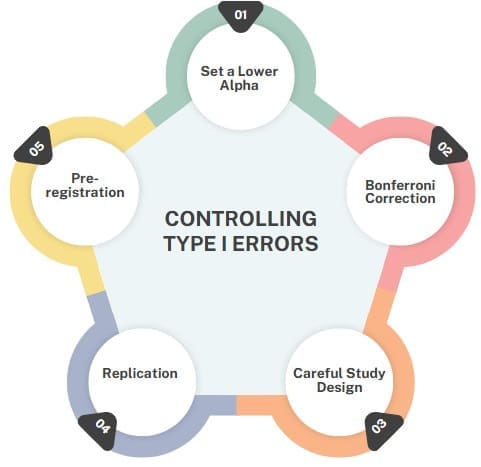
Set a Lower Alpha: Use a smaller significance level (e.g., 0.01). This reduces the risk, but it also increases the risk of a Type II error (missing a real effect).
Bonferroni Correction: When doing many tests, adjust the alpha level. This helps control the overall Type I error rate.
Careful Study Design: Good planning and data collection reduce errors.
Replication: Repeat studies to check for consistent results.
Pre-registration: Publicly state your hypothesis and methods before starting the research. This prevents “p-hacking” (manipulating data to get a significant result).
Final Words
Type I error is a critical concept in hypothesis testing. It represents the erroneous rejection of a true null hypothesis, leading to false positives. While Type I errors cannot be completely avoided, researchers can minimize their likelihood by carefully selecting the significance level (α) and employing rigorous statistical methods.
Type I error has significant consequences, especially in fields like medicine, where false positives can lead to harmful decisions. By understanding Type I error and its implications, researchers can ensure that their findings are both valid and reliable, contributing to more accurate conclusions and better decision-making in various fields.







